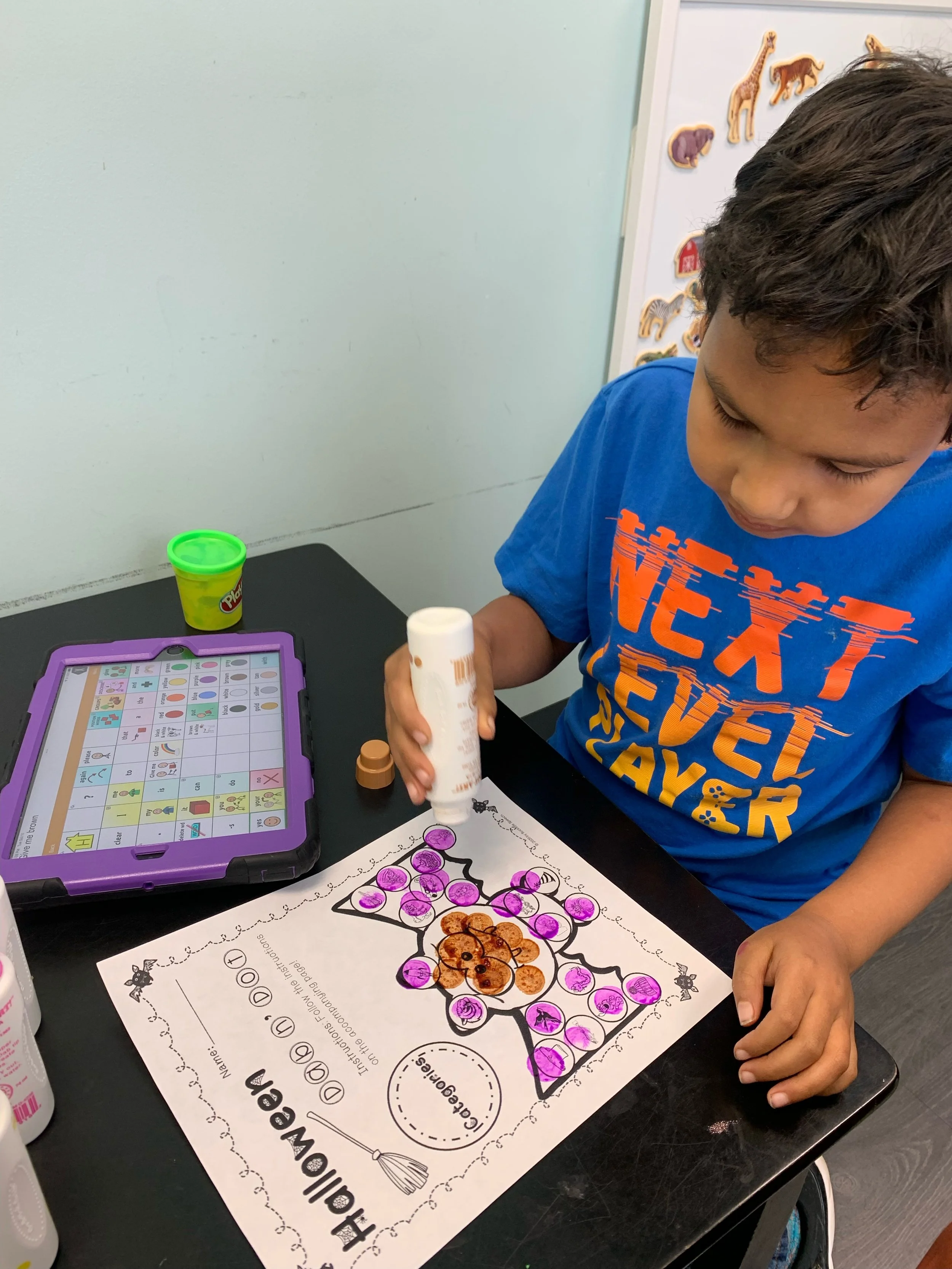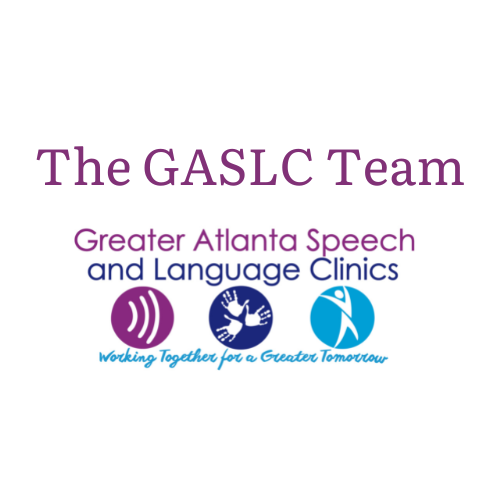A Recap of AAC Awareness Month
October was AAC Awareness Month! The theme for this year was “Show Your Voice,” which many of our clients do using AAC, or augmentative and alternative communication. We had lots of fun posts and social media takeovers throughout October from some of our clinicians who have a special interest in this area. Let’s recap AAC Awareness Month by going over some important facts, common myths, and ways to model language with AAC at home. If you are the parent of a device user, we’d love your input or success stories! If you are new to the world of AAC or wondering if this might be an option for your child – read on.
Let’s start with the basics!
What is AAC?
AAC refers to an alternative method of communication that varies from what we view as typical communication (speaking). This can present in many different forms, but we divide types of AAC into unaided vs. aided, and low-tech (or no-tech) vs. high-tech options.
Unaided: Nonverbal means of natural communication, does not require an external tool. This may include..
Gestures
Facial expressions
American Sign Language (ASL)
Body language
Aided: approaches that require external support, or a tool. Examples of these can be broken up into low-tech vs. high-tech options.
Low – Tech
Communication boards/books
Pictures
Visual schedules
Objects
Writing
High Tech
Computer/tablet/smart phone
Single message device and recordable/digital devices
Speech Generating Devices (SGDs)
Accessing AAC
Another important consideration when selecting a method of communication or a device is how the patient will access it. There are two main types of selection methods for AAC: direct and indirect selection. Ms. Emme is one of our wonderful clinicians who has great experience with selecting different access methods for her clients. Check out some of her helpful info below!
Indirect Selection is when the AAC user selects a target from a set of choices. Examples of this may include:
Visual Scanning
Auditory Scanning
Partner-assisted scanning
Direct Selection is when the AAC user selects a specific target with a body part or accessory. Examples of direct selection may include:
Touch
Eye Gaze
Joysticks
Laser Pointers
Head Tracking
This might sound overwhelming, but your SLP is here to assist you with taking everything into consideration and making these decisions!
Encouraging Use of AAC at Home
It is so exciting to finally receive a device or have success with an alternative method of communication. It’s our experience that sometimes a parent may become overwhelmed with how to actually use AAC at home to encourage communication. There is an answer to this, and it is MODELING!
Modeling
A note on modeling language at home because this is so important for our AAC users to become familiar and successful with their device or method of communication. Modeling is when we as parents/therapists use AAC to communicate. We model by pointing/pressing the words to teach communication. Think: Speak AAC to Teach AAC!
So what are some ways that you can model language at home? Check out these 5 ideas from another one of our wonderful clinicians, Ms. Sophie!
Common Myths
There are a lot of myths related to using AAC and it’s not uncommon for parents to be hesitant about using an alternative form of communication. We all want our kids to be able to speak verbally, but as SLPs, we see having a way to communicate with others as the main goal. AAC is a wonderful tool we can use to help our patients communicate effectively, and it also encourages verbal speech! This can also help decrease frustration that your child may experience due to having a lack of communication. There are no pre-requisites for AAC. Let’s give these kids a voice!
We love our AAC users and are passionate about helping our patients communicate. If you have any questions about AAC for your child, we are here to help! Special thanks to Ms. Emme and Ms. Sophie for contributing content!
References:
Augmentative and Alternative Communication. Asha.org. https://www.asha.org/public/speech/disorders/aac/
AAC: Direct selection access methods: https://www.communicationcommunity.com/aac-direct-selection-access/
AAC: Indirect selection access methods: https://www.communicationcomunity.com/aac-indirect-selection-access/
Focus on AAC Methods: https://tdvox.web-downloads.s3.amazonaws.com/MyTobiiDynavox/focus-on-access-methods-adult-idea-8.pdf
AAC Clipart by Deborah Yong.
TPT Store: https://www.teacherspayteachers.com/Store/Deborah-Slt



















